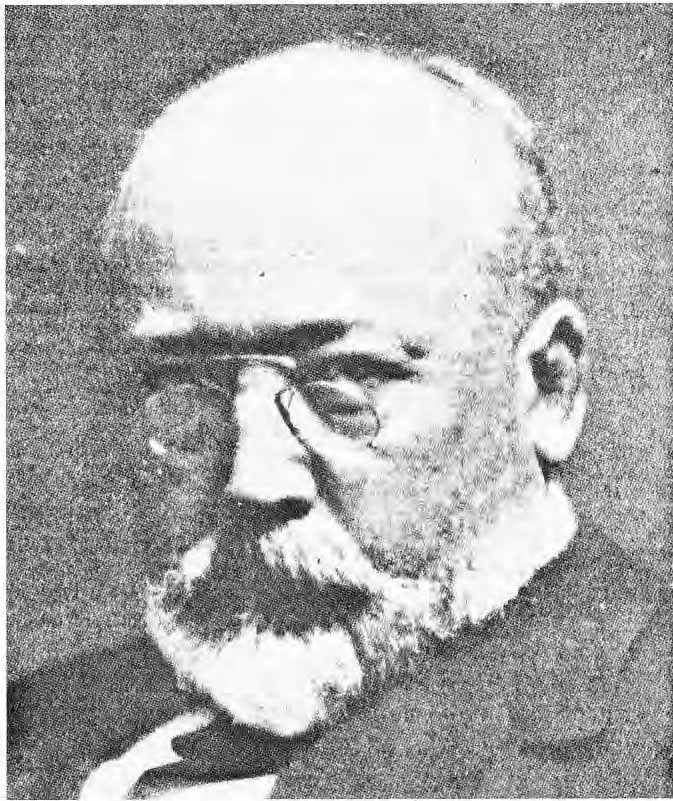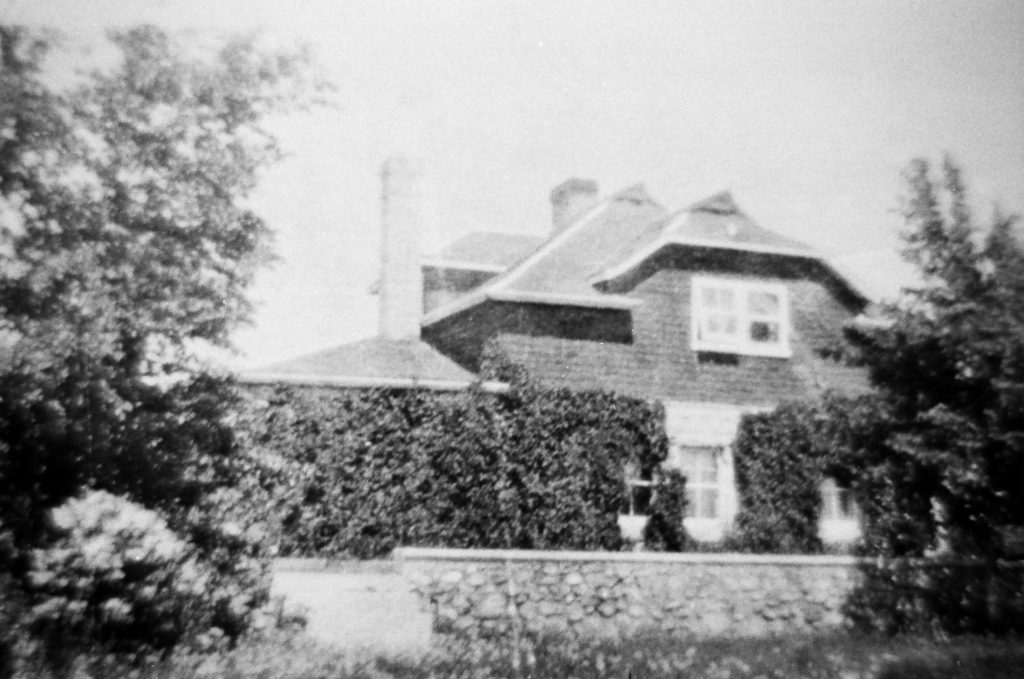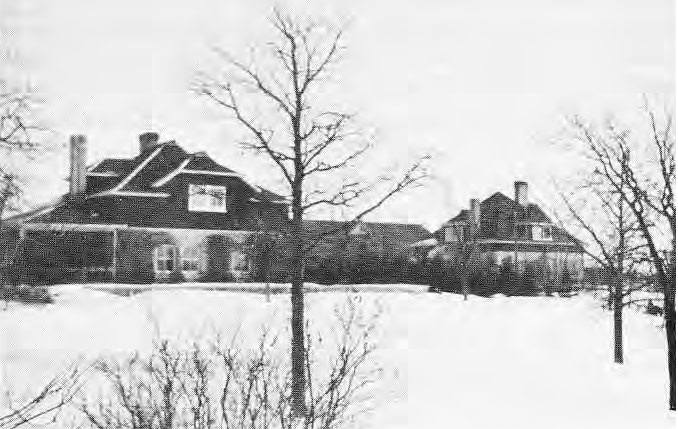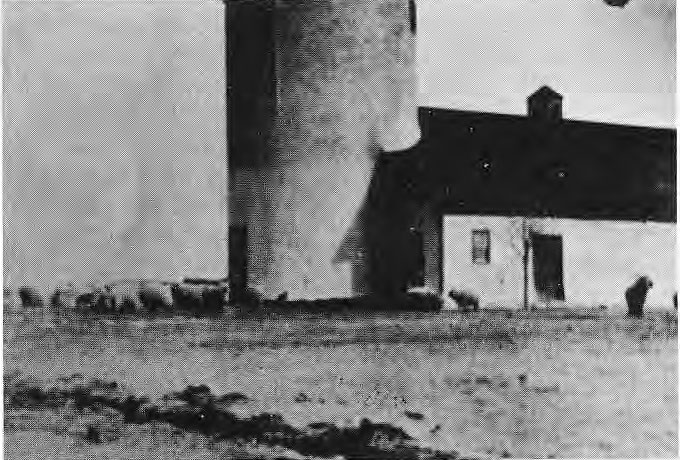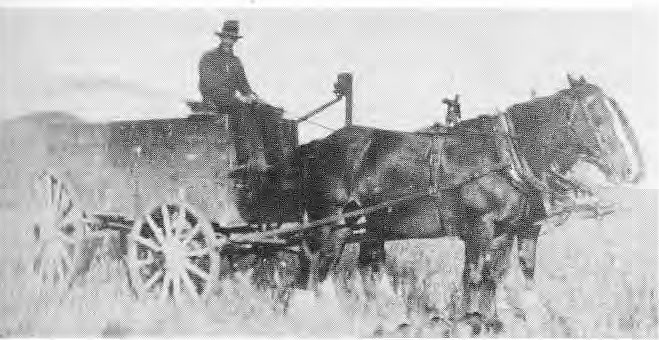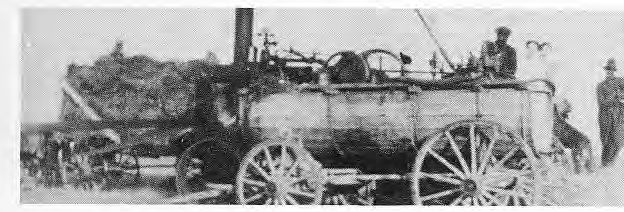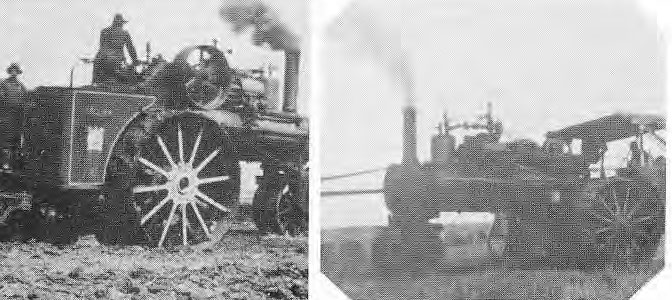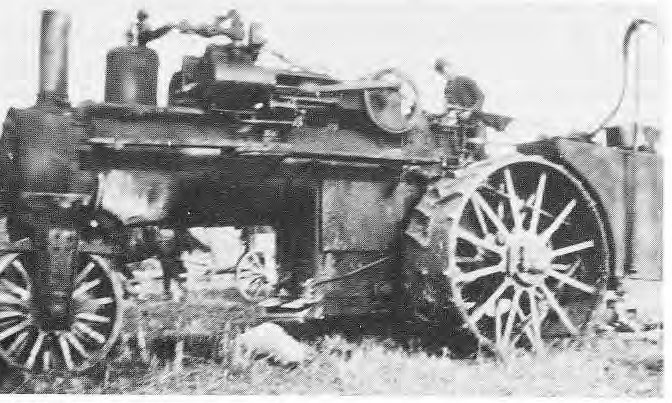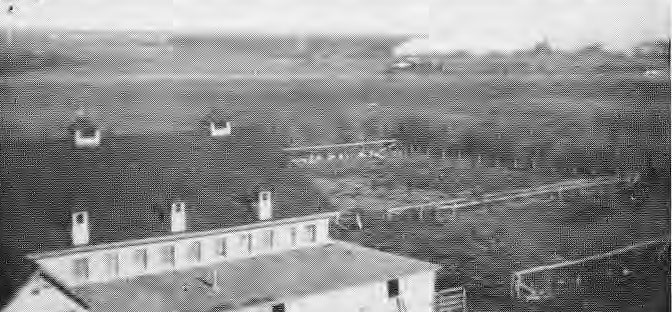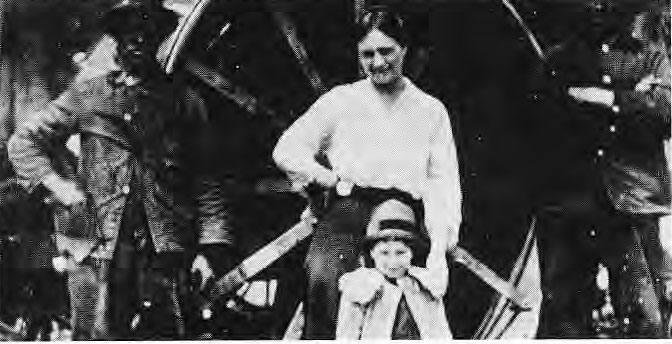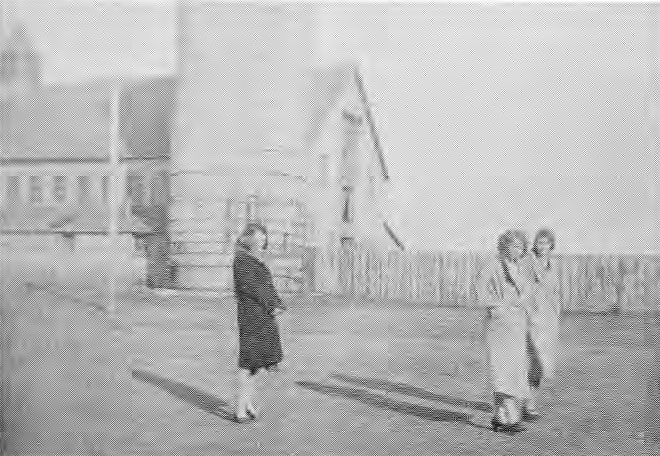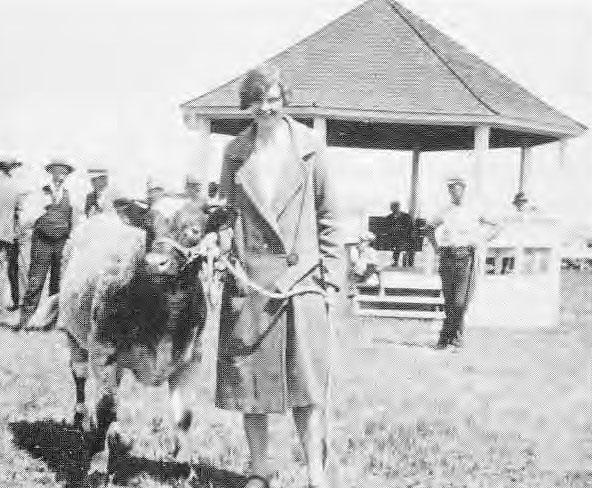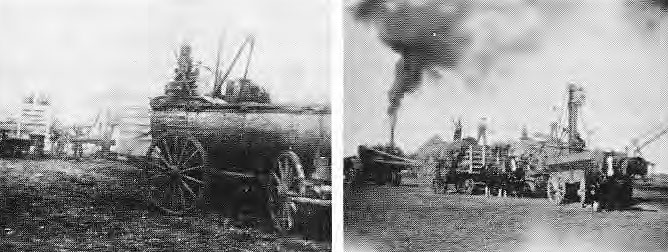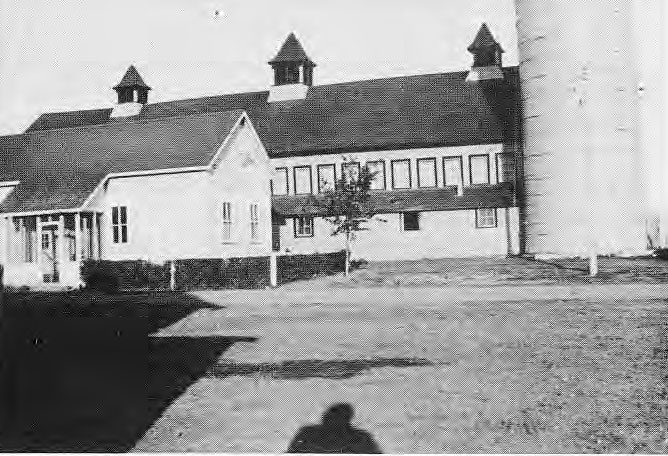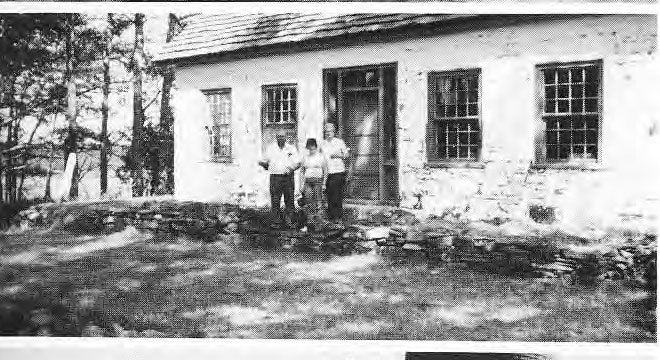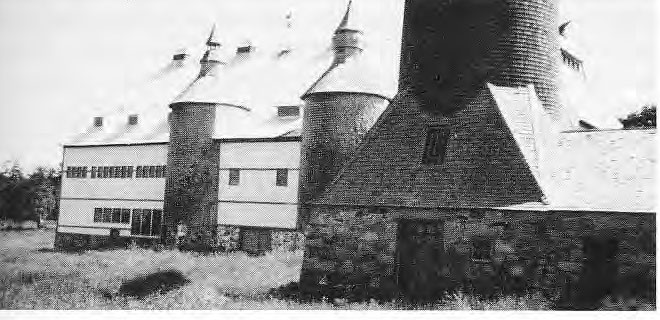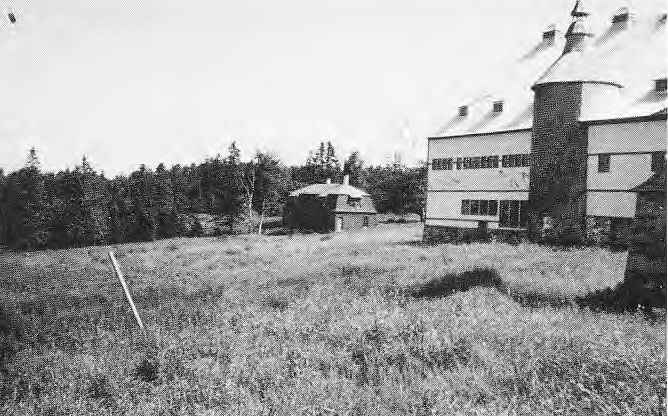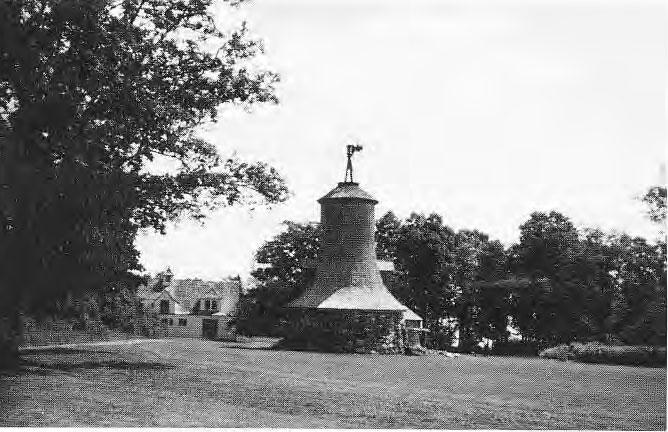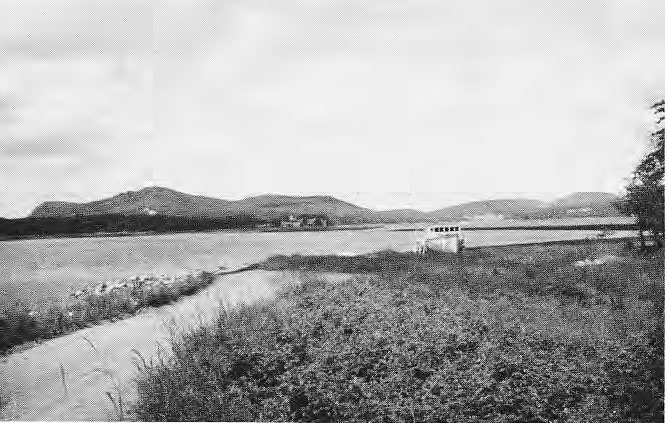Sir William Van Horne (1843-1915) –
“It has always been a profound belief of mine that the things which people regard as next to impossible are the easiest things to do. Consequently I have always set myself out to perform the next-to-impossible, wherever I have run against it.”
William Cornelius was the first of five children born to Cornelius Covenhoven Van Horne and his second wife, Mary Minier (Richards) in Will County, Illinois. On the paternal side, his ancestors were Dutch. His grandfather, Abraham Van Horne, was an officer in the Revolutionary forces and later a minister in the Dutch Reform Church. On the maternal side, William was of German and French descent. His father, Cornelius, received his education at Union College, Schenectady, studied law, and became active in politics as a Democrat. He moved to Illinois in 1832, and, partly by farming and milling and partly by practicing law, managed to earn a meager living and to rear his family. It was in these surroundings that William spent the first 8 years of his life. He was born on Feb. 3, 1843. There was no school or Church in the vicinity and the boy’s only schooling, until l85l when the family moved to Joliet, was that furnished by his mother. When he was 3 years old, he began to make sketches and early on showed evidence of ability to draw.
In Joliet, his father was soon well established and within a year, was elected the first mayor of the city. William made the most of his opportunity to attend the public school, to read every book that came his way, and to develop a hobby in collecting rock specimens and studying geology.
His father died in 1854, and the mother was left almost penniless but managed somehow to keep the family supplied with bread and the children at school. William, at the time of his father’s death, was only a young lad, not yet in his teens.
William, who was not an industrious student but had a quick intelligence and a retentive memory, was employed intermittently to deliver telegraph messages and learned to send and receive in the Morse Code. At the age of 14, he was given his first full-time job as telegraph operator, with the Illinois Central Raihoad. Later he was engaged in similar capacity by the Michigan Central Railroad. He was the first operator in his district, and one of the earliest in the country, to receive by sound alone and dispense with the use of the recording tape. When the Civil War began he promptly enlisted, but his superintendent secured his release because his services as a telegraph operator and general assistant were important to the railroad and because he was the main support of his mother.
In 1862, William transferred his service to the Chicago. and Alton Railroad in Joliet, and in 1864 he became dispatcher in Bloomington. Four years later he was appointed Superintendent of Transportation. In 18?2, he became General Supt. of the St. Louis, Kansas City and Northern Railway. His success in that position led in 1874 to his appointment as General Manager and finally as President of the Southern Minnesota Railway with offices in Wisconsin.
- William Cornelius Van Horne
This road was in its second receivership, was in wretched physical condition and the morale of the employees was notoriously low, but under Wlm. Van Horne, the property was soon rehabilitated and the receivership terminated in 1877. His fame as a railroad
man was at this point firm and well publicized and his services in demand. He then became General Superintendent of the Chicago, Milwaukee and St. Paul, a position he held for 2 years, and accomplished increasing efficiency and reduced considerably the operating costs.
In 1880, he crossed swords with James J. Hill. Hill was so impressed with the strong qualities of Van Horne, that he recommended to the Directors of the Canadian Pacific Railway that if anybody could carry out the tremendous task of building the proposed Canadian transcontinental railroad, this man could. Van Horne took charge of the work of construction at Winnipeg on Dec. 31, 1881.
The story of the building of the CPR is mainly a history of Van Horne’s achievements in overcoming stupendous difficulties. The physical problems and those concerning the relations of the Company with its employees were peculiarly his; the problems of finance and relations with the Government rested mainly on the shoulders of the directors, but they shared their burdens with him.
The project was carded to completion in 1886 and Van Horne, who had served from l88l to 1884 as General Manager, and from 1884 to 1888 as Vice-President, was elected President of the CPR in Aug. of 1888.
Failing health led him to resign on June 12, 1899, and accept €lection as Chairman of the Board of Directors and Member of the Executive Committee, In these positions, however, he was never active, and in 1910 he withdrew from all official connection with the CPR.
The relief from heavy responsibilities in 1899 had quick and beneficial effect upon his health. Leisure he had found distasteful, so he turned to new and distant fields for work. In 1900, Van Horne started building a 350 mile railroad through the Eastern Provinces of the Island of Cuba and completed the project in less than 2 years. Next he was off to Guatemala, where he undertook to direct the construction of the last 65 miles of Railroad from Puerto Barrios to the city of Guatemala.
Coincident with his railroad activities, he was a director or officer in several large industrial enterprises.
Returning from his last trip to Cuba in June 1915, he was stricken with fever and died in Montreal on Sept. I l, of that year. (2 o’clock Sat. afternoon, 1915). He was 73 years old at the time of death. He was survived by his wife Lucy, son R.B. Van Horne and a daughter, Miss A. Van Horne. He was taken by special CPR train to Joliette, Ill. and buried on Wed. Sept. 15, 1915.
In addition to his imposing graystone house in Montreal, Van Horne had a beautiful summer home in St. Andrews, N.B. and a pretentious winter home in Camagi.iey, Cuba. He took intense interest in designing and supervising the construction of the buildings and grounds, and himself painted some of the mural decorations. His early talent for drawing and painting had been developed as a means of diverting his mind from business cares and his later paintings had artistic merit. For many years he followed his early bent toward paleontology, and treasured his large collection of paintings and rare Japanese pottery.
With Van Horne’s ability to deal with men, either in directing work or in business transactions, was coupled a strange shyness in formal social gatherings. He declined more than once to accept an honorary degree from the McGill University and refused to allow his railroad colleagues to pay tribute or hold a testimonial dinner when he retired from the presidency of the CPR. He disliked publicity and had an aversion to speechmaking. When knighthood was offered to him, both in 1890 and at the end of 1891, he asked that it be deferred. However, in 1894 he accepted royal appointment as a Honorary Knight Commander of the Order of St. Michael and St. George. Prior to 1890 he had become naturalized under the Canadian laws
In personal characteristics, Sir Wlm. was of imposing and handsome appearance – tall, massively built, and bearded. Officially, he was cold and austere, a leader of the driving type; personal, with friends, he was genial and companionable. He was entertaining as a story-teller, with a tendency in his late years to exaggerate. From those who worked under him he demanded first of all complete loyalty; to them too he was loyal and generous, but he was not noted for his contributions to charity, public institutions, and the like. His wealth was devoted in the main to his family, to his homes, and to his
hobbies.
In March 1867, while a train dispatcher at Bloomington, Ill. he married Lucy Adaline Hurd of Galesburg, Ill. who in 1858, because of her beauty and personal distinction, had been chosen to read the address of welcome when Abe Lincoln visited Illinois. Three children were born to Sir William and Lucy: a son who died in his 5th year and a son and daughter who with their mother were still living when Sir Wlm. died.
By the way, it may be remarked that Sir Wlm. was a man who needed very little sleep. ln fact, so little that he maintained that sleeping was only a habit, and one in which he only indulged for an hour or two at a time. He would think nothing of working through the whole night.
Sir Wlm. always took a keen interest in agriculture and from his farm at East Selkirk did much to stimulate livestock breeding of the best class. Choice Shorthorns, fine Clydesdale horses and the best of Yorkshire pigs came from this East Selkirk farm to the various spring and summer shows. He also took a keen and personal pride in the wins made by his exhibits. He would then forward all the cups and ribbons to his Montreal home. The methods of cultivation on the farm were of the best and much good experimental work was done of which the country as a whole got the benefit.
During the spring of 1899, Sir Wlm. Van Horne made several trips to the Province of Manitoba. There was much speculation as to his frequent visits and it was noted he was viewing with some regularity, land lying north of the City of Winnipeg and east of the Red River. On Friday, May 19, 1899 he visited the East Selkirk and Tyndall areas again and this time took an extended drive into the country lying east of the Red River. The object of his visit, it was reported, was unknown. Rumours ran rampant. It was a possibility that a large colony was transferring from Montreal and settling on the land, or it could be an experimental farm, cattle ranch or dairy etc. By early June, 1899 about 2000 acres had been purchased comprising the tract between East Selkirk and Alex Butler Rowley’s, and the lots east as far as Tyndall were being negotiated for. Those who had studied the question were inclined to believe that the real object of the CPR purchasing that particular tract of country was to secure control of the limestone beds which were known to exist there. According to the reports of the day the ridge extended through the East Selkirk and Tyndall areas, and it boasted that the quality of the stone could not be equaled anywhere between Port Arthur on the east and Calgary on the west.
Then about mid-June, 1899 news was received from Toronto that Mr. Fred W. Barber of Georgetown had received the appointment to superintend the big northwest farm which was being established by Sir Wlm. Van Horne, Chairman of the CPR Board.
Commenting on the intentions of Sir Wlm., an article in the Winnipeg Free Press, of Tuesday, June 20, 1899 said:
“The farm that Sir Wlm. has decided to establish is at
East Selkirk and will stretch for many miles along the railway and Sir Wlm. says that it will be in the highest state of cultivation and an elaborate system of drainage will be carried out. It will serve as an object lesson to people coming into the country from the east As these people, when learning they have arrived in the Red river Valley naturally begin to look for extensive grain fields of which they have heard so much — and they experience much disappointment in discovering that these fields are not in evidence until after Winnipeg is tell behind. And perhaps an unfavorable impression may thus be planted.”
“And this it may be stated is the purpose of Sir William’s enterprise — To overcome this that Sir William will go into the farming business. It is to be noted that the work involved will be of great expenditure. He is doing it for no personal gain – but solely in the interests of the country — whose welfare he has deeply at heart.”
Van Horne visited the site, laid out his plans, made extensive notes and everything was in readiness for Fred Barber who arrived in East Selkirk on June 26, 1899. Mr. Barber’s first task was to familiarize himself with his surroundings and then prepare for lending and the erection of buildings. According to Mr. Barber, who was questioned on arrival, the farm buildings would be in view of the train and the area of the farm would be about 3,000 acres to start, with expansion anticipated later.
The Van Horne scheme also had the instant effect of stimulating real estate sales in the surrounding areas. Registrar Vaughan was flooded with calls inquiring about land and remarked that “the Van Horne farm seems to have awakened people about the advantages of land around Selkirk.”
The first few weeks were spent in brushing and clearing of land. Then the fencing was commenced and a start was made on the buildings. Thomas Thomkin (CPR) was in charge of the construction work while Adam Miller (Stonemason) did the masonry. The Foreman was William Farr and the first Cook was Mrs. Isaac Ovens (Katherine) who had just moved to East Selkirk in 1898.
The project suffered somewhat from labour disputes. One in particular ended in court (Miller vs. Thomkins) for action over wages and damages for wrongful dismissal. Also, another interesting incident occurred on Thurs. Oct. 5. 1899 when a team and wagon belonging to the Van Horne Farm backed off the ferry causing both horses to drown. It appears that after the ferry landed and was tied. that the driver and another man got into a spot of trouble that caused the horses to take fright. The animals backed off into the river and drowned. One man also had narrow escape from drowning. According to Mr. Holdgate (ferryman) this was the first serious accident occurring on the ferry between the east and west side since he started running it in 1882.
The Superintendent’s residence was soon completed and the Barber’s moved in. Fred Barber had no sooner ordered 3 “Celebrated Scrubbing Machines” from A.E Brown of Hamiota. for the Van Horne Farm, when the Rev. David Gorden arrived from New York for a visit to benefit his health. He was the father of Mrs. Barber, and the visit, rather than benefit his health, caused his death. He contracted Pneumonia shortly after his arrival that so weakened him that death resulted.
- Van Home Farm residence.
- Van Horne Farm Left-Managers House destroyed by fire.
- Van Horne Farm
The Van Horne Farm right from the beginning, supported sports and recreation within the area. One trophy in particular was a prestigious cup in solid sterling silver. On the cup was engraved “The Van Horne Trophy – 1900” and it was presented to the curling rink winning that event. The base shield held the names of the annual winners. In 1900 the winning rink was skipped by F.E. Holloway and his curling mates: J. Walls, H.W. Beale and M. Moncrieff, while in 1901 the curling winners were: W. Mclntyre, J.T. Donaldson, R. Rennie and M. Moncrieff (skip). lf Sir William didn’t make it in person to present the trophy, his good friend, H.W. Nelson of East Selkirk, often performed the pleasant duty.
Early in June 1901, there was much agitating for the right-of-way through the Van Horne land for a proper road leading to the East Selkirk Station. Sir Wlm. said he desired to have the matter adjusted to suit all parties but nothing definite could be promised because it was possible that the station would be moved to another site. Mr. James Yule was appointed Manager of the Van Horne Farm in 1902. He had previously been in charge of the “Prairie Home Farm” of the Hon. Thomas Greenway of Crystal City.
Early on the Van Horne Farm commenced building up its stock of horses and cattle. A special mare “Boydston Lass” was bought from a sale at the Hon, Greenway’s “Prairie Home Farm” at Crystal City while carloads of pedigreed short horns were arriving regularly from Eastern points and abroad. By 1903, the cattle were being exhibited and capturing large numbers of prizes as were his horses (Clydes). It was in 1903 that Sir Wlm. Purchased the stock of the late Senator Cochrane and shipped the entire sale to East Selkirk. According to Bill Ranger who started off as a Teamster and became Foreman of the VHF, Cooks Creek which meandered through the farm had 22 springs that kept the water flowing all winter. They never had to pump water for the cattle. During the summer of 1903, the Van Horne Farm had about 450 acres in grain and their yield of wheat was 50 bushels to the acre that year.
In April of 1903, J.D. Hedley and others addressed the Council of the R.M. of St. Clements in reference to having a road laid out which would allow them and other settlers in TP. 13, Ranges 5 and 6 to get into East Selkirk. It was stated that Sir W.C. Van Horne was breaking up a large quantity of new land and fencing it up and thus closing up all the old trails which the settlers in the vicinity had been in the habit of using. There was nothing left but the road between the inner and outer two miles. They further stated that if they were confined to this means a bridge would then be required over Cooks Creek. Reeve Robert Hay pointed out that the crossing of Cooks Creek was in the Town of East Selkirk and the Municipality of St. Clements could not do and ,thing there, as it was outside their authority. In speaking with the Minister of Public Works about municipal roads, it was suggested that the Government should build a bridge at this point, however, the government could not see their way clear to completing this task.
In Oct. 1903, while the residents were still clamoring for a bridge over Cooks Creek, the Van Horne Farm were then constructing the 160′ long building (piggery) to house the thoroughbred pigs being raised there.
1903 was also the year that the Van Horne Farm added to the stock, several car loads of “Dutch Belted” cattle, shipped from the St. Andrews, N.B. farm along with some Standard bred mares. Just before the snow fell, “Spiced Marquis” had come home (l year old shorthorn bull) having won first prize at the Toronto Exhibition.
By the end of Oct. 1903, Council of St. Clements had, by resolution, written to J.A.M. Aikens, thanking him for permitting the opening of the Crossing of Cooks Creek through the Van Horne Farm property. Council also asked Aikens to notify the Manager of the Van Horne Farm of the arrangements, indicating relations were a little strained over the fencing up of the old trails.
Under the managership of James Yule, the Van Horne Farm received much publicity through the exhibits of their purebred cattle at the various agricultural shows. Apart from that, he was often selected as a Judge at the rural plowing matches and guest speaker at various functions. Early in Dec. 1905, Mr. Yule was gored by a vicious bull at the East Selkirk farm and the injuries received from this accident left him in ill health for the rest of his years. He sustained further accident in the winter of 1908 which did not help the situation. This latter incident was as a result of a run-away horse and Mrs. Yule was injured and laid up for some time, as well.
In 1906, Albert Davis, an employee of the Van Horne Farm was also gored by another vicious bull. Albert gradually improved and the animal was shot to prevent further attacks.
Over the years, James Yule built up the Yorkshire Piggery, added to the stock of purebred cattle and increased the strain of thoroughbred horses. He was nearly always successful in carrying off many of the highest prizes for the purebred animals raised on the East Selkirk farm and exhibited at all the leading exhibitions. Mr. Yule had a stroke of some severity in Dec. of 1910 and resigned as Manager of the Van Horne Farm early in 19ll. He passed away on Nov. 8, l914 after a long and painful illness.
James Roger Oastler, who had worked for Sir wlm. At the St. Andrews Van Horne Farm in N.B. transferred to the East Selkirk Farm to replace James Yule as Manager. James Oastler was more of a scientific agriculturalist than his predecessors (Barber and Yule) and brought to the community of East Selkirk his vast knowledge and techniques concerning soil management and weed eradication. He became very involved in the community and a leader of the Agricultural Society movement. His wife Beatrice (Andrews) who he met and married in St. Andrews, N.B. in 1905, brought to the Van Horne Farm in East Selkirk, a graciousness and social order not quite equalled at that time. Not just satisfied with the running of the Van Horne Farm social calendar, Beatrice also found the time to enthusiastically support the St. Andrews- St. Clements Agricultural Society and an active and devout member of the Knox Church. J.R. had a genuine interest in the purebred cattle line and he was always a uniting force in the community that inspired youthful farmers-to-be to pursue good farming techniques.
The Van Horne Farm continued to exhibit their cattle at various fair’s around the country and always carried off a good share of the prizes. One of the stallion’s “Lord Ardwell” nearly always won first prize in his class, while the herd of shorthorn’s very often won “best breed of any breed” for successive years and thus the cups and trophies along with many hundreds of ribbons added up for the East Selkirk farm. Sir Wlm. Nearly always allowed the trophy or ribbon to remain in East Selkirk on display and then very quietly removed them all to his Montreal home where he proudly displayed them for all to view.

Every year the Van Horne Farm continued to break up stony ground, reclaiming and turning the land into fruitful grain fields. The farm showed the results and skill of the men who managed it. Under Mr. JR Oastler, it was cleaner and more productive than ever before. In 1907, the solid blocks of excellent hay and large breadths of pasture with its well mixed red clover came in for much praise as did the large seedlings of wheat and oats.
Students from the Manitoba Agricultural College often visited the Van Horne Farm in East Selkirk. They would come down by train in charge of one of the Professor’s and would spend the day viewing, inspecting and judging the thoroughbred stock on the farm. All the stock would be arranged according to their class and age and the students would attempt to score them. The students totaling anywhere from 40 to 100 would be treated to a royal luncheon and entertained by the Manager of the farm. Students who took part in stock judging often came to East Selkirk where they practiced and performed prior to their official duties in Chicago, Toronto or parts west.
Mr. Sangster, Stockman, was much in evidence during the James Yule years and Oastler’s at the Van Horne Farm. Many a horse was bred from “Lord Ardwell” (Clydesdale) who used to “stand for service” every Wed. and Thurs. over at Dickinson’s Stable in Selkirk. During the early years of 1900, Mr. Sangster was classified as a Groom.
When the van Horne Farm was at the peak of operation there was some friendly rivalry between the Asylum Farm and Van Horne’s. The newspaper of the day would often quote that “threshing operation at Selkirk Asylum just started while threshing about finished at Van Horne Farm in East Selkirk.”
It didn’t matter where the cattle were exhibited or what prizes were won, the press took pride in the achievements of the Van Horne Farm. Whenever, Sir Wlm. bought any cattle, it was news, duly reported upon and price paid. The press delighted in covering the purchases from out of Province or out of Country and the more paid, the bigger the article. Large crowds would gather to view the unloading of any new stock that Van Horne had shipped into town.
The people of the British Isles knew almost as much about the farm as we did here at home- Whenever our dignitaries or visiting politicians ventured abroad, they were invariably questioned about the Van Horne Farm.
On Feb. 12, 1914 at about 12 a.m. the Granery at the Van Horne Farm was destroyed by fire, although some effort was made to save it.
Sir Wlm. took an avid interest in his East Selkirk Farm and was a frequent visitor. He would not always inform his managers when we would arrive, therefore, the place was always in a state of readiness.
During the years 1900 to 1902, Sir Wlm. was much involved in the 350 mile railroad through the eastern provinces of the Cuban Island and from 1903 to 1908 completed the Guatemala railroad. It is said the latter gave him more trouble per mile of railroad than any he had undertaken.
With advancing years and impairment of health his activities began to diminish, but in a few things he continued interest. One was the farm at East Selkirk.
Returning from his last trip to Cuba in June, 1915 he was stricken with fever and died in Montreal on Sept. I l, 1915.
Royal Trust was in charge of the Manitoba portion of the Van Horne Estate and it took several years to untangle the disposition. However, by late Jan. 1917, it was reported to be worth about $505,555 of which the land totaling some 4,000 acres was valued, at that time, about $100,000. The building on the celebrated East Selkirk farm were estimated to be worth some $20,000 and the livestock and machinery over $25,000.
During the war years and especially in the spring of l9t 8, many a car load of choice stall fed cattle were sold in aid of war relief and food shortages. Benson Bros. (Meat Market) in the Town of Selkirk were often advertising prime and choice beef which were bought by the car load from the Van Horne Farm.

R: Jim Potter and Ken King, Diary Sire in front of the horse bard, 1928
The returned soldiers (1918) especially those confined at the Tuxedo Hospital on occasion came down to the East Selkirk area to watch the threshing operation of the Van Horne Farm. The people on the east side of the river would band together to ensure them an enjoyable days outing. On one occasion, besides the soldiers, about 150 citizens all gathered at Mrs. Nelson’s for a “Good Time Banquet” and the weather always seemed to cooperate. East Selkirk was an area often complimented for their thoughtfulness toward our returned soldiers during the war years. According to Bill Ranger, who was only 18 yrs. old when he went to work at the VHF, they cropped 4000 acres; ran 2000 sheep; had 60 horses for handwork; 30 Holstein cows for milking and over the winter they fed an extra 100 cows for spring sale.
It was early in June, l918 that Council authorized the new road along the CPR from East Selkirk (18 to 2 mile Road Allowance) and also closed up the road division across the corner of Sec. 19-13-6E and the 33’allowance on both sides of the CPR and the lanes around the park Iots within the boundaries of the Van Horne Estate. Mr. D. Burbella was a strong petitioner for a road through the Van Horne Farm and Council granted his wish and as in all cases, the matter had to be taken up with Royal Trust.
During the summer of 1920, the Van Horne Farm hosted the Second Annual Plowing Match under the auspices of the St. Andrews Agricultural Society. The women’s section of the “East Selkirk United Farmers of Man.” served the lunches and had a booth on the grounds, realizing a tidy sum.
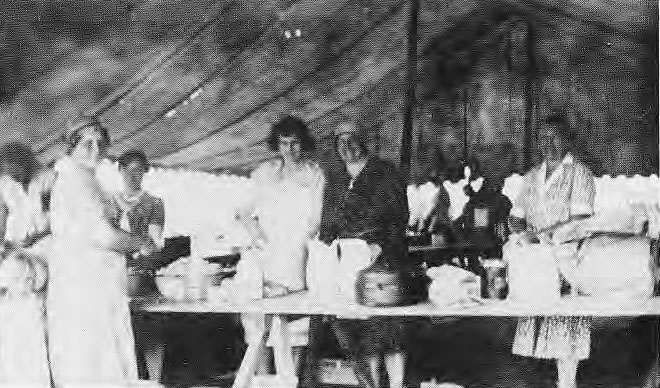
It was said that 1920 being a dry year, that the land was very difficult to plow. Also, the land having considerable stone, the quality of work done was not so high a standard as it otherwise could have been – but the interest was great and the community supported the event by largely attending.
1920 was also the year that the Van Horne Farm experimented with the sugar beet industry for commercial use. This was done under the watchful eye of Mr. Newcombe the Agricultural Representative for the area.
